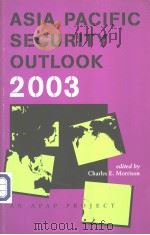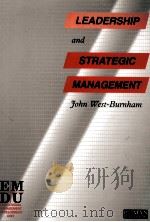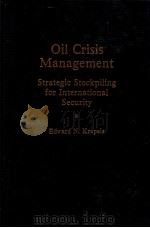《STRATEGIC ASIA 2003-04 FRAGILITY AND CRISIS》
| 作者 | RICHARD J.ELLINGS AND AARON L. 编者 |
|---|---|
| 出版 | 未查询到或未知 |
| 参考页数 | |
| 出版时间 | 没有确切时间的资料 目录预览 |
| ISBN号 | 无 — 求助条款 |
| PDF编号 | 820553668(仅供预览,未存储实际文件) |
| 求助格式 | 扫描PDF(若分多册发行,每次仅能受理1册) |
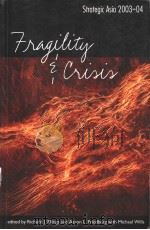
Strategic Asia: Introduction1
Introduction: Fragility and Crisis3
Domestic sources of fragility and resilience5
International sources of fragility and resilience18
Transnational sources of fragility and resilience24
Strategic Asia: Country Studies31
United States: U.S. Leadership-Prevailing Strengths Amid Challenges33
Underlying U.S. strengths in post-Cold War Asia36
U.S. relations with Asian powers39
Challenges and preoccupations41
China: Sources of Stability in U.S.-China Security Relations53
The strategic goals of the Chinese Communist Party56
Improved atmospherics, cooperation in the war on terror, and tepid PRC opposition to the war in Iraq59
Taiwan: reasons for near-term optimism60
Non-proliferation: promise of future cooperation62
North Korea: from passivity to U.S.-PRC cooperation63
Addressing SARS: new thinking after the NPC?68
The challenges ahead71
Japan: Tilting Closer to Washington81
Bolstering the alliance84
Adjustments in Japan's defense strategy85
Coping with the "axis of evil"87
Relations with other powers94
Domestic factors and Japanese strategy100
Future prospects102
South Korea: Anchored or Adrift?109
Variable for change112
Variable for continuity117
U.S. rebalancing and realignment125
North Korea: The Korean Nuclear Crisis-On to the Next Level131
The crisis unfolds133
Motivations of the DPRK leadership142
The reactions of the other powers147
Alternative outcomes154
Another twenty years' crisis?158
Russia: Russia's Soft Balancing Act165
The realities behind Russian diplomacy166
Diplomatic scorecard: Putin plays coalition dynamics170
Managing pragmatic partnerships in Asia173
India: Regional Concerns, Global Ambitions181
The home front: domestic politics182
Economic progress: still slow but still steady187
Pakistan relations: crisis, miscalculation, and hope188
Looking west and east: foreign policy on the larger stage192
Implications for the United States196
Pakistan: A State Under Stress209
Domestic challenges: the threat from within210
Trouble on the western frontier: continued support for the Taliban211
The home front: political crisis, intolerance, and sectarian violence213
Insurgency in Kashmir: baleful impact on Pakistan215
The economy: improving but fragile216
Foreign relations: continuity and change218
The United States and Pakistan: building institutions and a long-term relationship219
Interests and issues: a healthy state and a stable region220
Indonesia: Turbulent Times-From Autocracy to Democracy229
Political, economic, and security challenges232
Violence, terrorism, and political tools236
The key of the armed forces239
Near-term prospects and impacts on U.S. Policy242
Strategic Asia: Regional Studies249
Northeast Asia: The Geopolitics of the Korean Nuclear Crisis251
Four parties seeking to shape U.S.-DPRK relations253
How far does multilateralism go?263
Southeast Asia: Wither Security Regionalism?269
ASEAN: has expansion led to the Peter Principle?272
The ARF: is the tail wagging the dog?275
Other forms of regional security cooperation279
Southeast Asia and a rising China: an economic embrace and political caution281
The increasing role of other extra-regional powers283
Central Asia: Defying "Great Game" Expectations291
The great powers' interests in Central Asia292
Great power actions in Central Asia295
The Central Asian states' responses307
Strategic Asia: Special Studies319
Terrorism: The War on Terrorism in Southeast Asia321
Al Qaeda comes to Southeast Asia323
Developing the network327
Origins of Jemaah Islamiyah331
Organizational structure333
The fall of Suharto and the jihad in the Malukus335
Jemaah Islamiyah becomes a terrorist orgianization337
The current state of Jemaah Islamiyah339
Fighting the war on terror: regional responses342
The limits of regional cooperation351
Proliferation: The Growing Challenge of Proliferation in Asia365
Supply-side and demand-side drivers367
Proliferation channels in Asia369
(In)efficacy of global, regional, and national responses383
Future proliferation challenges for Strategic Asia387
Economic Integration: Implications of Regional Economic Integration399
Current trends and recent initiatives401
Asian goals407
Prospects for success416
Strategic implication420
Implications for the United States: is integration compatible with U.S. interests?423
Economic Stability: Will Asia's Economies Fail or Return to Growth435
Government-business relations in Asia438
Industrial and financial policies in China441
The growth fundamentals445
The future447
Demographic Trends: Strategic Implications of Asian Demographic Trends453
The "population explosion"-yesterday's news455
Do shifts in relative size matter on the Asian strategic stage?459
Aging Asia: an uneven burden among countries461
Unfavorable mortality trends467
Imbalances in sex ratios at birth472
Strategic Asia: Indicators485
Strategic Asia by the Numbers487
Economies488
Globalization and trade490
Investment492
Population494
Energy496
Defense498
Conventional military forces500
Weapons of mass destruction502
Index507
About the Authors519
About NBR527
《STRATEGIC ASIA 2003-04 FRAGILITY AND CRISIS》由于是年代较久的资料都绝版了,几乎不可能购买到实物。如果大家为了学习确实需要,可向博主求助其电子版PDF文件。对合法合规的求助,我会当即受理并将下载地址发送给你。
高度相关资料
-
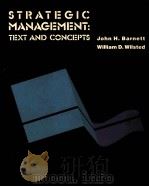
- STRATEGIC MANAGEMENT:TEXT AND CONCEPTS
- 1989 PWS-KENT PUBLISHING COMPANY
-
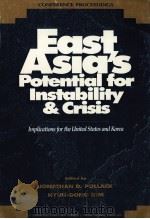
- East Asia's Potentioal for Instability & Crisis. Implications for the United States and Korea
- 1995 Center for Asia-Pacific Policy
-

- CASES AND MATERIALS ON MINNESOTA WORKERS' COMPENSATION 2003-04 EDITION
- 1984 BUTTERWORTH LEGAL PUBLISHERS
-

- MONEY ACCUMULATION AND CRISIS
- 1986 ROUTLEDGE
-
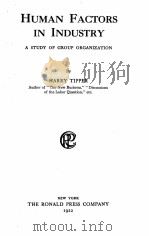
- HUMAN FACTORS IN INDUSTRY A STUDY OF GROUP ORGANIZATION
- 1922 THE RONALD PRESS COMPANY
-
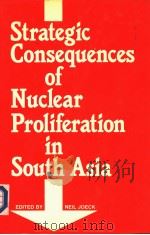
- STRATEGIC CONSEQUENCES OF NUCLEAR PROLIFERATION IN SOUTH ASIA
- 1986 FRANK CASS
-

- STRATEGIC ENVIRONMENT IN SOUTH ASIA DURING THE 1980S
- 1979 NAYS PROKASH:CALCUTTA-6
-

- International Crisis and Conflict
- 1993 ST.MARTIN'S PRESS
提示:百度云已更名为百度网盘(百度盘),天翼云盘、微盘下载地址……暂未提供。➥ PDF文字可复制化或转WORD
